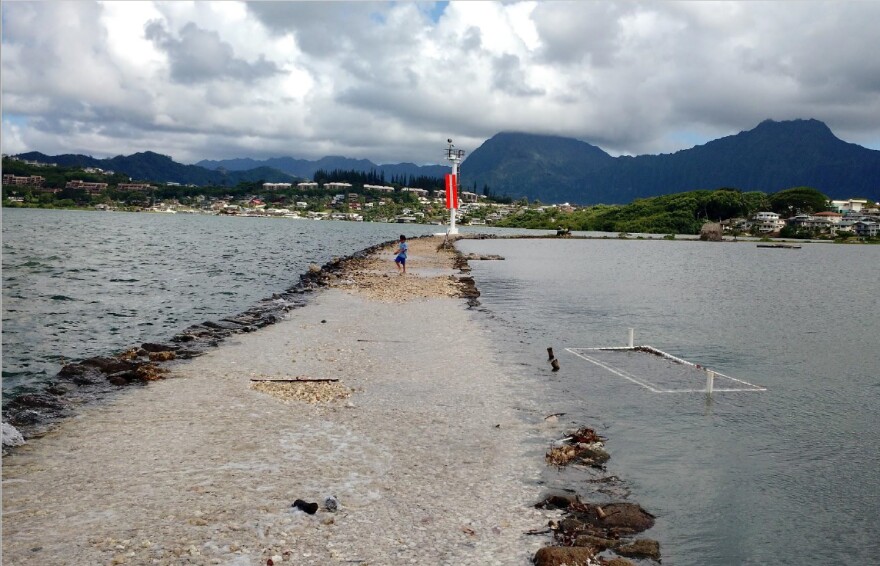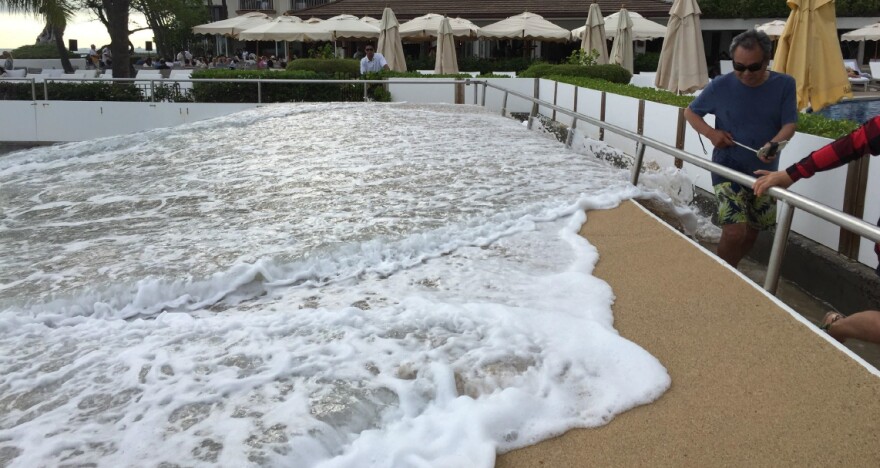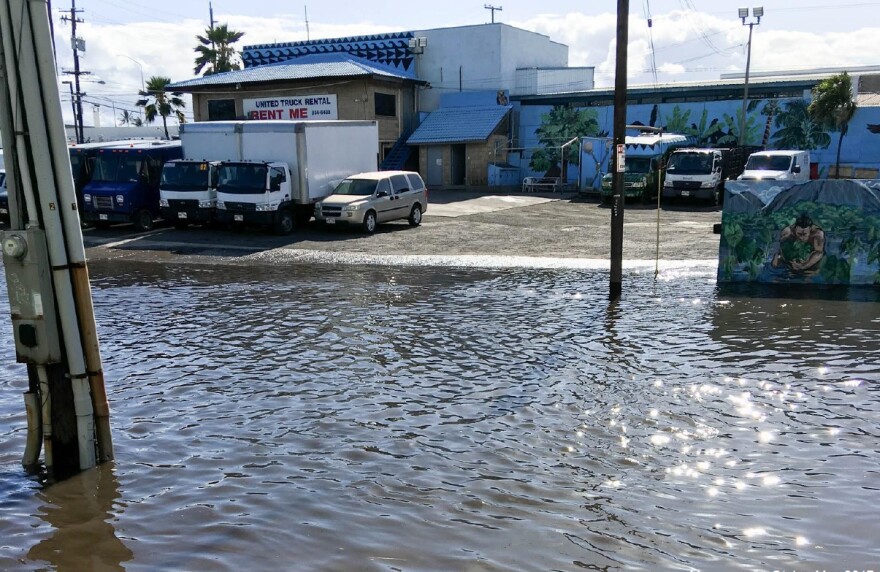For the past two years, the University of Hawai‘i Sea Grant Program has been recruiting citizen scientists from across the Pacific. They were trained to document high water levels or King Tides in an effort to understand and adapt to sea level rise. HPR’s Ku?uwehi Hiraishi sat down with project coordinators who saw an uptick in citizen participation in 2017.
“People are responding to this call to action,” says Maya Walton, Program Leader for the University of Hawai’i Sea Grant Program.

Walton leads the King Tides Citizen Science Project. In 2016, the group collected more than 500 photos mostly from Hawai’i residents. And last year…
“We had over 2,000 photographs contributed this summer alone,” says Walton.
Anyone can participate. Just head out to the coastline during the month’s highest tide. Snap a photo of what you see and upload it to the project’s online database. On top of the visual contribution, participants are also prompted to include written observations.
“People’s observations that they make in the places that they know really well; places that they’ve been living next to, or maybe you’re a surfer or a fisherman,” says Walton, “These place-based observations are really important for the partners that we work with.”

The photo database is already being used by university researchers, climatologists, and policy makers. Brad Romine is a coastal hazard specialist with the UH Sea Grant Program. He breaks down some of the most notable impacts from photos collected on O?ahu.

“We’ve seen a lot of flooding in like Mapunapuna. That’s flooding back through the storm drain system and the ground water system,” says Romine, “We also seen high wave run up over wash on a lot of our beaches with the king tides. And then coastal erosion has also been a problem too. We’ve seen quite a bit of that in Waikiki over this year. Other places on the North Shore like Sunset Beach has got a lot of attention lately. “

While it often takes a few years of data to directly result in published studies, Romine says, there will be ample opportunity to collect additional data and expand coverage.
“We expect these kind of intermittent high water events to happen more frequently and more severely as long-term sea level rise increases over the coming decades," says Romine, "So it’s really just providing a really good picture of what this looks like."

Walton says the real impact of this project is to engage the general public in the discussion on climate change and sea level rise.
“Sometimes when people think about climate change or sea level rise, they think it’s a distant thing,” says Walton, “When people go outside and make these observations themselves first hand, you realize real quickly that sea level rise is here, it’s in our backyards, it’s happening now.”




